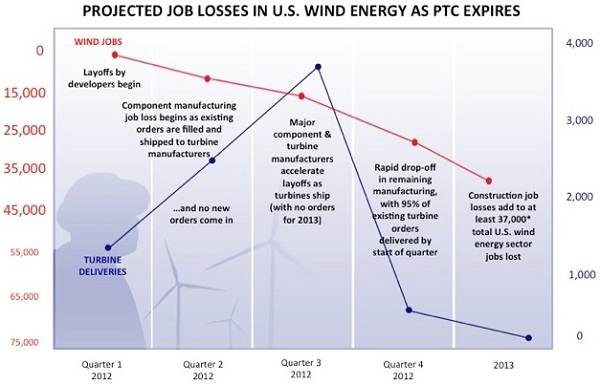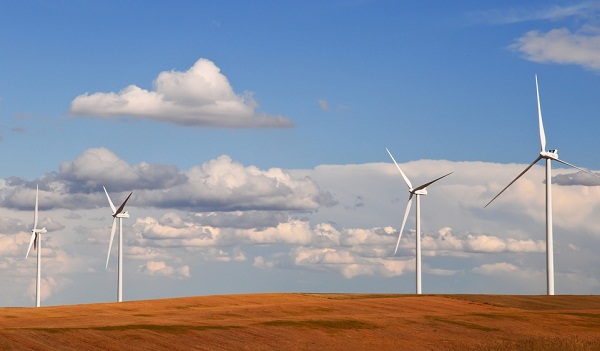Racing to beat the expiration of a key tax incentive, the U.S. wind industry installed 1,695 megawatts (MW) of new capacity in the first quarter of the year, a 52 percent increase over the same quarter in 2011, according to an industry trade group.
The American Wind Energy Association (AWEA) said 788 turbines began generating power in 17 states in the first three months of the year as developers pushed to get new plants into service before the end of the year in order to qualify for the federal production tax credit (PTC).

Despite having what qualifies in Washington these days as bipartisan support, efforts by wind power proponents to extend the credit beyond its Dec. 31 expiration have stalled in the Senate, where the requirement of 60 votes to pass legislation has proved insurmountable. The credit is worth 2.2 cents for every kilowatt-hour of power produced.
With the recent surge in installations U.S. installed wind capacity stood at 48,611 MW at the end of March, and that number figures to grow considerably in the next few quarters. The AWEA reported that under-construction numbers were “exceptionally strong in the first quarter,” with work getting under way on 2,284 MW and a total 8,916 MW being built. Kansas leads the way with 1,340 MW under construction, but new wind turbines are going up in 31 states and Puerto Rico, the AWEA said.
But while 2012 looks good, the industry is forecasting rough times afterward. That’s been the pattern with wind power development when the production tax credit has vanished.
“The choice is clear: with policy certainty, we’ll grow to 100,000 jobs in just a few years,” AWEA CEO Denise Bode said in a statement. “Without it, 37,000 jobs will disappear, particularly in U.S. wind manufacturing. It’s up to Congress to act now and extend the PTC.”
The AWEA said wind power accounted for 35 percent of all new electric generating capacity installed in the U.S. between 2007 and 2011, and said 75,000 people are employed in the industry supply chain.

While wind power has been concentrated in the Midwest and on the West Coast, the latest report showed it spreading into new areas of the country, which the AWEA attributed to improved technology that makes even less windy areas viable. The organization noted that the states with the fastest growth in installed capacity in the first quarter were all non-traditional wind states: Hampshire (up 388 percent), Arizona (72 percent), Massachusetts (17 percent) and Pennsylvania (15 percent).
Of course, those states had the advantage of starting from a smaller base, so a faster growth rate is easier to come by. In terms of raw new megawatts installed, the usual suspects came out on top, with California adding 370 MW, Oregon growing by 308 MW and and Texas, the nation’s top wind-power state, putting in an additional 254 MW.